If you purchase an independently reviewed item through our site, we earn an affiliate commission. Read our affiliate disclosure.
Bee friendly plants are not only important for the beekeeper, but they are also essential for farmers and homeowners who have crops. Bees not only benefit from the flowering garden but they also help to pollinate the plants. This is why bees are so important – they are a crucial component of the plant reproductive process, Some of the crucial times when pollen is required is during: nest growth, fattening of the queen in readiness for hibernation, establishment of the nest by the queen, and when new queens and males are being produced by the nest.
An ideal garden should at least have two kinds of bee friendly plants at any given flowering season. However, you can plant more if you like since the more the suitable flowering plants available the better. Nonetheless, you have to ensure what you plant does not escape into the wild.
If you are looking for a fast-growing and low-maintenance plant that will create an exotic atmosphere in your home, I suggest philodendron burle marx.
Things to Remember
- Some plant species are known for escaping from the garden and invading nearby wild habitats. For example, both the Himalayan balsam and Rhododendron ponticum should be avoided.
- Some plants have flowers with shapes that are not easily accessible by the bees. Some of these examples include petals that have long tunnels and are too long or narrow. Furthermore, those with various tightly-packed heads make it difficult for the birds to access food.
- There are various plants that appear to be bee friendly due to their pleasing appearance but actually have little to offer. Such flowers may never be suitable for the bees since they produce little or no pollen and nectar. These include plants such as double begonias and pansies. You can buy rare plants online.
- Never use pesticides on your garden. Most of them have been labeled as “bug killers” or any other similar name. Using such chemicals may harm the bees even if it might not be your intention to do so. You can avoid using chemicals to control pests by simply planting specific plants on your garden. Bees are very sensitive to pesticides even if it is an organic pesticide and therefore you should embrace cultural control techniques. Some of these include: hand-picking, crop rotation, trapping, row covers, and many others. Never ever use pesticides on open blossoms or apply it when the bees or other pollinators are present.
Top Bee Friendly Plants
Plants are abundant in nature and flowers limitless. However, bees do not forage just any plant they come across. Certain plants allure bees more than others and the type of nectar plant consumed usually affects the quality of the honey. The beekeeper should therefore be objective when selecting flowering plants for your garden.
One of the best ways to make the get the most of bee friendly plants is by choosing a variety of flowers that allure bees. The plants should bloom at different times of the year as well. This will guarantee a steady supply of pollen and nectar throughout the year. A sure place to get started is by checking the various bee friendly plants that thrive within your specified climate. It would be crucial to ascertain the timing of the plants’ flowering as well. See Pasadena garden and tree care service.
Some Examples of Bee Friendly Plants Include the Following:
1. Lilacs
These are plants that are easy to grow and are normally available in seven unique colors. They are extremely alluring to bees and grow at eye level. They are characterized by a floral fragrance that bees and butterflies find irresistible. Lilacs can be grown in the backyard or garden. They not only boost the aesthetic value of the garden but, also helps to attract pollinators that increase productivity of crops, fruits, and other plants.
2. Poppies
Poppies are a spring flower that is alluring to bees and other pollinators. They are rich in pollen and nectar. Bees are particularly attracted to this flower due to its fragrance and sweet nectar and pollen. You can plant it in your garden or near the beehives.
3. Honeysuckle
A plant that is an excellent attractant of bees and other pollinators. It has a sweet smell and is also a good source of nectar and pollen for birds.
4. Lantana
This plant is characterized by its small flowers that exist in a cluster. They are good for bees given its rich nectar and pollen.
5. Snapdragons
This is a flower with a unique scent, shape and color. It is an attractant to bees and other pollinators such as bumblebees. These flowers usually release their scent during the day. Its yellow and blue color is easily seen by bees and hence the reason it draws bees. The flower is bell-shaped making it so much easy for bees to get the nectar and pollen.
6. Lavender
This plant is popular among beekeepers or outdoor enthusiasts that intend to attract pollinators. They have a long bloom time and are rich with nectar. They are the bee friendly and are best suited for gardens and backyards.
7. Wisteria
Perhaps you have come across a wisteria vine; characterized by excellent fragrance. The wisteria plant has a short growing season and once they bloom they attract pollinators. It is a climbing plant that is also beautiful to behold.
8. Mint
The water mint in particular is an excellent bee attractant. The plant’s amazing fragrance added to the rich nectar makes it one of the best bee friendly plants out there.
9. Sunflowers
These plants are not only beneficial to bees but they are also beneficial to humans. Its seeds and oil are widely used. The tall plant with its big and conspicuous heads is rich in nectar and pollen. Bees love sunflower flowers.
10. Sedums
These flowers usually grow towards the end of summer, which makes it ideal for bees just before the onset of winter. Sedums are easily accessible to short-tongued honey bees.
11. Ammi
Also referred to as false queen. This plant is an annual plant that is easy to grow and attracts wild and domestic bees. It is used widely as an organic solution to some natural scavengers such as aphids, garden pests, and caterpillars. This plant can grow to up to 50 cm and produce plenty of nectar and pollen that attract pollinators.
12. Milkweed/Asclepias
This perennial plant is popular in gardens. It is an excellent attractant of butterflies and the honey bee. It also attracts hummingbirds and bumblebees. This plant produces plenty of nectar. They are easy to plant during spring and require pre-planting of the seeds indoors before being transferred to the garden. The plant can grow to a maximum height of 70cm.
13. Bergamot
This is also referred to as Bee Balm & Monarda. You can plant wild bergamot or lemon bergamot in your garden since they attract bees. They usually bloom towards the end of summer, a time when most bee-friendly plants have been exhausted. They attract honey bees as well as other pollinators such as hummingbirds and butterflies. This is a perennial plant usually produces a lot of seeds and is self-sowing. You can plant it in flower borders or raised beds. The wild bergamot will grow to 90 cm and is the tallest of the plants.
14. Rudebeckia or black-eyed Susan
Native to Missouri and Maryland, this bee friendly plant is bright in color and rich in pollen and nectar. It works well in any garden.
15. Borage
A bee friendly plant that can grow to up to 60cm is a perennial herb whose flowers are blue in color. Its fragrance has a mild and cucumber taste. It attracts the honey bees, bumblebees, and other foragers. You can grow borage in raised beds or containers.
16. Buckwheat
This is an annual plant that is used widely and is easy to grow. Its flowers are rich in nectar and bees love it. It grows very fast and is usually used as a cover crop, helping kill weeds and generates organic matter that enriches the soil. The nectar usually results in dark honey that is rich in flavor. The plant is cut and ploughed back into the soil after flowering so as to boost the fertility and texture of the soil. The buckwheat can grow to up to 75cm within a period of 6 months.
17. Calendula
This plant produces edible flowers and can be grown in containers. Its yellow and golden orange flowers are normally sprinkled over summer salads. Its flowers are rich in nectar and pollen and usually attract honey bees, wilds bees, butterflies, and other foragers. It usually grows to up to 60cm.
18. Cardoon
This tall perennial plant greatly attracts the honey bee and other pollinators. Its stalks are edible and it can grow to 1.3 -2 m. Its flowers are purple colored and will do well in any garden.
19. Celosia or Cock’s Comb
You can plant this in containers or raised beds. Its flowers are conspicuously red colored and the plant grows to only 35cm. It is an annual plant that attracts the honeybee and bumblebee. To get the best results, pre-plant it indoors in peat pots then later on plant it outdoors.
20. Cornflowers/Centaurea/Bachelor’s Buttons
This plant with its striking blue flowers is a pollen and nectar hub for bees and other nectar and pollen foragers. It is widely used for many purposes and since it is easy to grow makes one of the best plants for gardens targeting honeybees. The flowers are usually used in salads since they are edible. The plant can grow for up to 90cm and thrives well in pots or raised beds within a garden. It is a perfect summer flower for the beekeeper.
21. Chives
These are excellent plants for any garden targeting pollinators including the honeybee. It is characterized by delicious onion taste leaves and produce a globe-shaped cluster of flowers that are pink colored. This plant is commonly used by organic farmers to repel aphids and draw pollinators as well as predatory insects. They grow well in containers and also raised beds. It is easy to grow and highly versatile.
22. Cosmos
Cosmos are available in various varieties that have different flower colors and heights. Honey bees love cosmos flowers. You can grow the plant on raised beds or along the garden border. It blooms all summer and do not perform well when planted in containers.
23. Cucumber
The bright yellow flowers of the cucumber attract the honey bee. The flowers are not so good for pollination given the fact that they tend to be concealed by the broad leaves. You might have to include sunflowers so as to attract more pollinators to this plant.
24. Purple Coneflower/Echinacea
This is a popular cut flower that has purple flowers. It is a perennial plant that appeals to the honeybee. It also attracts beneficial pollinators such as hoverflies, butterflies, and other insect predators. The plant can grow to a maximum height of 90cm and is best suited for cottage gardens. It is particularly at its best after its third year.
25. Marigolds
These are excellent companion plants that make the best ornamental flowers. They are annual plants that are easy to grow and do extremely well in raised gardens, along the boundary of the backyard. They are rich in nectar and tend to attract bumblebees in mid-summer. It also appeals to the honeybee and other pollinators. They grow well also in containers and are generally easy to manage.
26. Purple Tansy/Phacelia
This annual plant is greatly appealing to bees and many other types of pollinators. It is rich in nectar and once bloom begins it takes months. Wild bees, the honey bee and bumblebees love Phacelia flowers which begins bloom during early to late summer. You can grow this plant in containers or raised beds. They can be fully exposed to the sun or grown under partial shade. At its peak the plant grows to height of 23cm.
27. Zinnia
Another excellent honeybee attractant that is an annual plant. It does extremely well in warm soil under full exposure to the sun. The flowers are nectar and pollen-rich making it the best for foragers. Zinnia flowers boast a wide range of colors, and bright and pleasing to behold. Zinnia plants can grow to maximum height of 75 to 90cm and do well in large containers. You might also consider growing the plant in raised beds or the border of the garden.
Wild and Native Flowers
It is wise to plant both wildflowers and native species. Wild bees evolved together with wild flowers and therefore the bees will benefit immensely when wild flowers are grown in close proximity to the hive. The wild flowers provide the best nectar and pollen.
Wild bees do not thrive best on perfectly set yards since they do not offer the necessary raw materials required for nest building. To get the best habitat for your bees, preserve a small bush pile or an area with reeds, dry grass or dead wood. Mason bees in particular prefer a muddy area since that is where they get important nesting material.
Single vs Double Flowers
If choosing between single or double flowers, then go for the single flowers. Those that have one ring of petals produce more pollen and nectar than double flowers. For the latter, the extra petals replace pollen-laden anthers. Another problem with double flowers is that it makes it difficult for bees to get an access to the inner parts of the flower. The single flowers are the best sources of food for the bees.
What about the Color of Flowers?
Flowers are available in different colors and each has a different effect on the bees. Some of the colors that appeal to the bees are blue, purple and yellow. Flowers such as zinnias, Queen Anne’s lace, daisies, and asters attract a wide variety of bees. These flowers offer flat or shallow blossoms. As for flowers such as salvia, oregano, lavender, and nepeta which belong to the mint family attract long-tongued bees. Some other flowers such as larkspur, columbine, monkshood, snapdragons, and monarda are preferred by long-tongued bumblebees.
Why Plant a Bee Friendly Garden?
Reliable stats have proven that bees pollinate more than a third of the food crops. They also contribute to approximately $15 billion in increased value in crops every year (according to USDA-ARS). A wide variety of familiar crops such as cranberry, apple, blueberry, squash, and many others rely heavily on bees for pollination. Bees and other foragers facilitate the movement of pollen between flowers which ultimately guarantees the production of fruits and seeds. No wonder bees are widely used for pollination services notwithstanding the fact that bees produce wax and honey. The value provided by bees is invaluable.
We plant bee friendly plants for a number of reasons:
- Even though bees pollinate some of the crops and plants that are readily available, these are not sufficient to cater for the nectar and pollen needs for the bee colony. The colony demands plenty of nectar and pollen derived from a wide variety of plants. Pollination services also impact the food supplies and health of the bee colony. The heavy loss experienced by beekeepers due to diseases and colony decline has also raised concerns and almost everyone currently strives to provide a healthy environment for bees.
- Food supplies, that is, nectar and pollen, affect the health of the bee colony. This is usually sourced from varied and innumerable types of flowers available throughout the growing season. Clean water sources are also required for the survival of the bee colony. By planting bee friendly plants, you can help increase the variety of flowers available for foraging. Backyard gardeners, landscape managers, commercial beekeepers, farmers, home owners, and many others can help boost the survival of bees by planting bee friendly plants. These include wildflowers, trees, and shrubs that are rich sources of nectar and pollen.
- Food availability gap is a common occurrence especially during the active periods from February to November. Food decline during this time can weaken the bee colony. It can even result in colony collapse, usually a common problem globally. The most difficult time for bees is during early spring when they have emerged from the hive in search for nectar and pollen. During this time a few flowers are blooming meaning nectar and pollen is scarce. The natural environment may not sustain the bee colony during active periods since flowering plants are limited. It therefore helps for the beekeeper to plant the bee friendly plants.
- The list of beneficial herbs, shrubs, and trees explained herein are rich sources of food for the honeybees during spring and other seasons. They are also beneficial to butterflies, wild bees, and natural enemies of cash crops. By planting these plants you not only enhance honey bee services but you also help minimize the impact of pests and invaders on agricultural crops. Asides, these plants helps boost landscape beauty, act as habitat for mammals and birds, and boosts the biodiversity in your local area.
How to Create a Bee Friendly Plant Habitat
You can come up with a bee friendly habitat by following a few simple steps:
1. Choose the right plants
Bees are very choosy when it comes to flowers. They love berries, wild flowers, flowering vegetables, fruits, and flowering herbs. Different regions within the USA and beyond favor a number of bee friendly plants. You should therefore check out the type of plants that thrive within your region. Check out some of those explained earlier.
2. Cluster same plants
Most of the bee friendly plants have flowers that are tiny and might be ignored if grown as stand-alone. Therefore, to get the best results, group same plants so as to attract then bees effectively. You can plant an entire yard of same plant species just to ensure they are conspicuous.
3. Consider the blooming cycles
Different plants bloom at different times of the year. They also have different duration for the bloom. Those with long blooming cycles are the best for bees. You may as well select plants that have successive blooms.
4. Provide a source of clean water
Bees rely heavily on water. It is not uncommon to see a cluster of bees near a water source. You should therefore ensure you have a source of clean water for the bees. You can provide a backyard waterfall, sloping bird bath, dripping hose, and any other shallow water source. The plant leaves are also an excellent source of water for the honeybee. Morning dew that collect on plant leaves and flowers are a good source of water for the bees.
5. Ensure a chemical free garden
You should avoid any type of chemical in your garden. Herbicides, pesticides, and other types of chemicals have a negative impact on bees. They are toxic and will affect other useful insects as well. The garden, lawn, and trees within close proximity to the hives should be free from chemicals.
6. Consider flowering weeds
Certain weeds such as clovers, milkweed, dandelions, goldenrod, and many others make excellent flowers for bees. These can be included in lawns and gardens that lie close to the bees. These weeds should be allowed to grow within the yard and it will attract bees. The main advantage associated with bee friendly weeds is the fact that they can thrive without much hard work on your part. Weeds have adapted to harsh environs and tend to mature faster and require zero maintenance.
How Bee Friendly Plants Allows for the Ideal Bee Diet
The worker of the honeybee collects pollen and nectar which is the main food for the bee colony. The nectar collected is normally passed from one worker to the other, a process which tremendously reduces the water content in the nectar. This process results in what we call honey, stored in the honeycomb cells. The basic diet for bees is composed of honey and pollen. However, bees collect other juices and liquids sourced from plants and fruit exudates.
Bee diet is composed of a wide range of nutrients, mainly carbohydrates, vitamins, proteins, minerals, and lipids. All these nutrients are required by the bee colony, from the young ones, the queen, to the worker bees. They are ideal for the bee colony to develop and thrive. Vitamin B complex is required by the queen bee, larvae, and worker bee. Proteins are sourced from pollen usually brought by the worker bee from plants flowers. The male honeybee is fed on proteins secreted by young worker bees and mixed with pollen and nectar. The young worker bees produce royal jelly which used for feeding the honey bee Queen and larvae. The royal jelly is a rich source of protein.
Reliance on protein diet decreases as young bees mature. They begin to depend on sugar, lipids, and carbohydrates. The nectar and honey are rich in sugar and carbohydrates. These helps produce energy that is converted to fat stored in the body for future needs. Since the bee colony is self-sufficient, the bees have adapted to the changes in the environment. Nectar and pollen are collected heavily during blooming seasons. These are converted to honey stored in their food reserves for future use. What is consumed in converted to body fat stored in the body for utilization during winter months when it is extremely cold.
Vitamins are sourced from royal jelly various microorganisms, and pollen. The worker bees collect pollen and store it within the hive. The nectar and pollen is collected for use by the entire colony. Pollination is the outcome of this process of collecting pollen and nectar.
Food supplements should be provided to bees during January and February. This is the period when the queen bee resumes egg laying. Brood production then follows so as to provide the required workers for spring. Supplemental feeding is required by most bee colonies since natural sources of food might not be sufficient throughout the year. As a matter of fact, we plant bee friendly plants so as to ensure the bees can get the required nectar and pollen throughout the year. You can check out the food reserve status of the hive by lifting it from the rear. If the hive is light then it is time to supplement the bee diet. Sugar syrup, usually a component of sugar and water is supplied to the bees using the feeders. You can also purchase commercial pollen supplements just to ensure the bees are well provided with proteins.
Is Beekeeping for Everyone?
If you are a gardener who is only interested in getting an appealing garden, then you may wonder whether it is possible for you keep your own bees. Well, beekeeping can be important for two reasons. First off, you do not have to ever worry about pollination of the garden. Pollination in simple terms refers to the process that involves the transfer of pollen from one flower to another flower of the same species. The pollen transfer facilitates fertilization which then kick-start the process of fruit and seed formation. There are many pollinators including self-pollination. Others include insects, bats, birds, and other living creatures. Bees are the best pollinators.
The importance of good pollination cannot be ignored. Well pollinated plants give large, healthy and viable fruits. But poorly pollinated ones give deformed fruits which in most cases fall off before maturity. Since the honeybee is the best pollinator then why not go for the best. Apiculture can be done as a hobby for as long as it is allowed within your state and as long as you adhere to the guidelines laid down.
The second reason to start beekeeping for those with gardens is of course the honey. You enjoy the immense health benefits of the sweet honey without paying a dime all within the comfort of your own homestead.
Conclusion
There are quite a number of bee friendly plants out there. You should choose the right combination of plant species. As a general rule, an ideal garden should provide pollen and nectar-rich, bee friendly plants from spring till late summer. This is the only way to ensure there is a good supply of pollen all through the most demanding times.
References
- https://www.swallowtailgardenseeds.com/tips_lists/bee-friendly-plants.html
- https://www.thespruce.com/best-plants-to-attract-bees-4142007
- https://morningchores.com/bee-friendly-plants/
- https://www.gardenersworld.com/plants/plants-for-bees/
- https://www.highcountrygardens.com/plant-finder/bee-friendly-plants
- https://www.gardendesign.com/flowers/bees.html
- https://www.treehugger.com/bee-friendly-flowers-5221440
- https://piwakawakavalley.co.nz/bee-friendly-plants/
 BeeKeepClub Resources and Guides for Beekeepers
BeeKeepClub Resources and Guides for Beekeepers
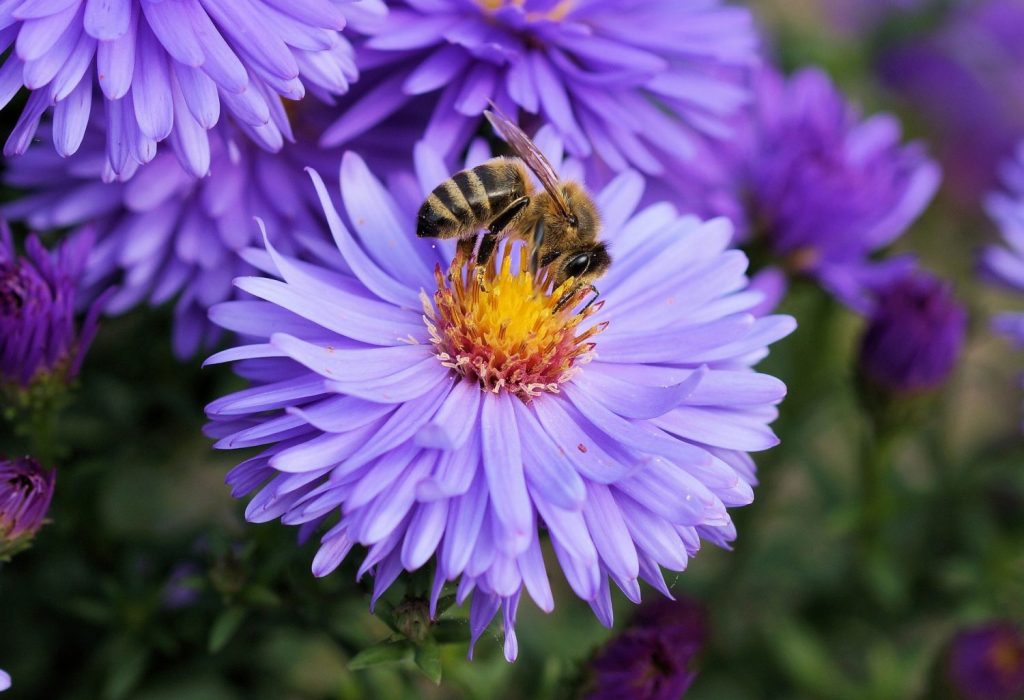



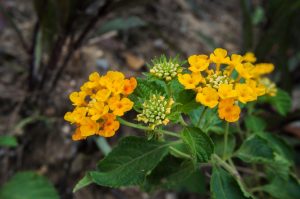
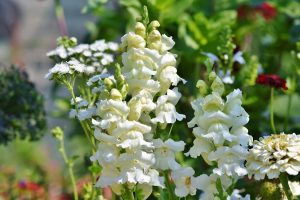
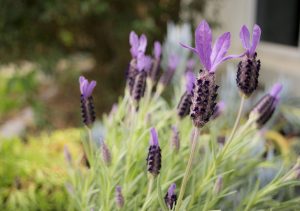
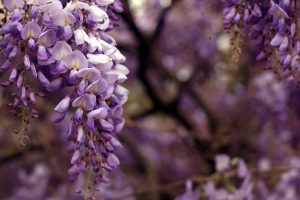

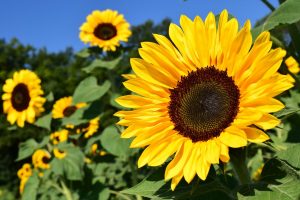



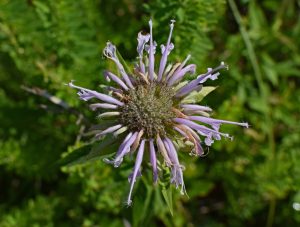
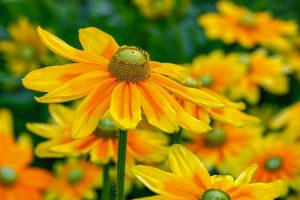



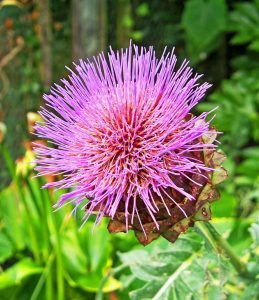
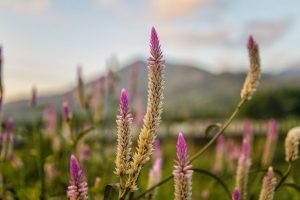


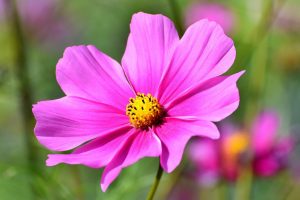
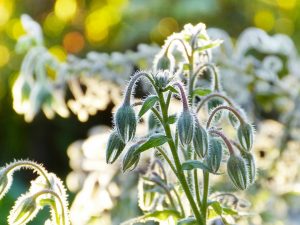


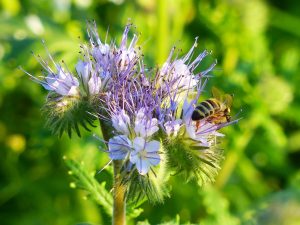
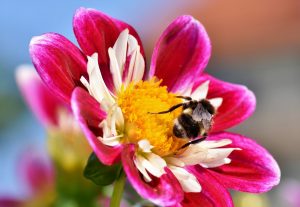
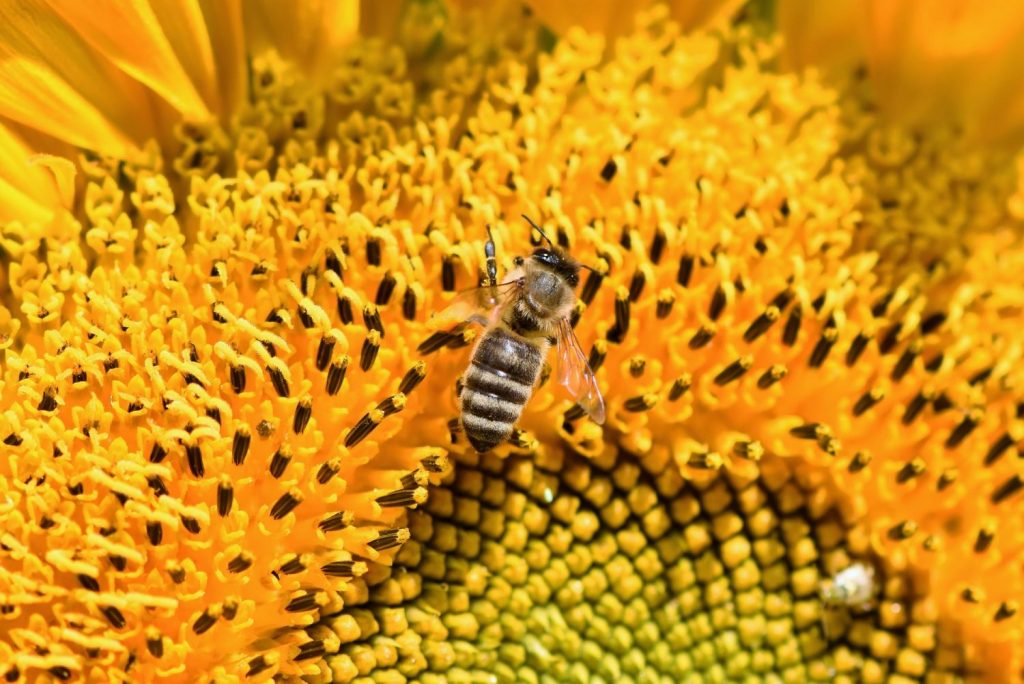

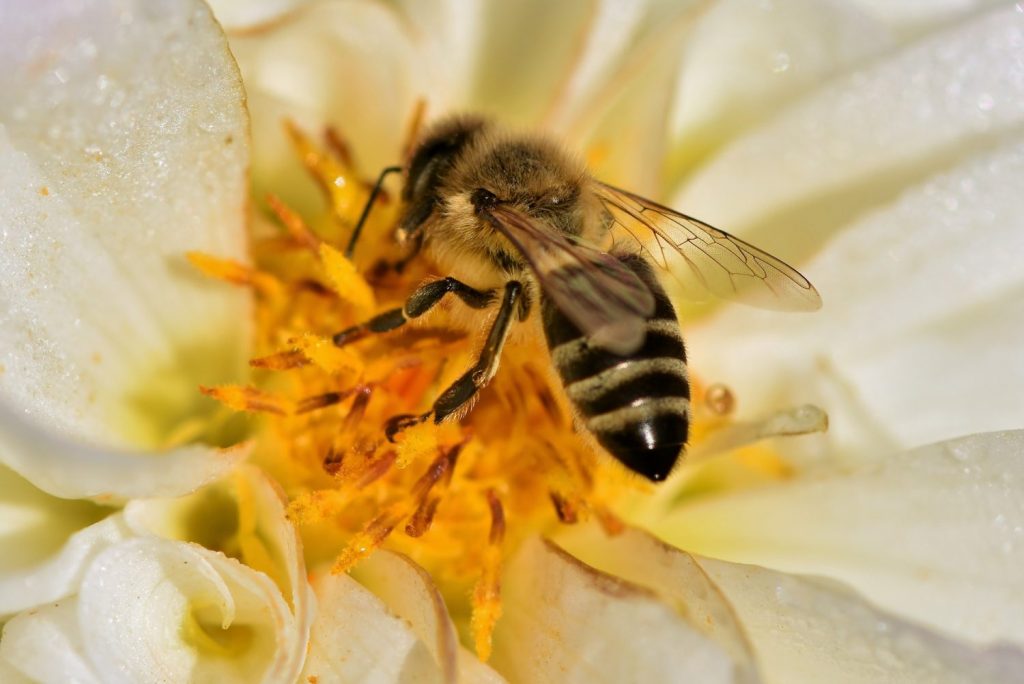
Wonderful article! The great variety of flowers presented was magnificent since most articles list under 10. What would be better if it also mentioned which of these flowers are good to protect against mites or aphids such as number 6 lavender similar to them mentioning number 21 chives. Coriander (cilantro) would have been a nice beneficial one to have for mites & aphids prevention. Feeding the bees that are dying from disease across the globe is a tad bit counterproductive as since the early 1980s a vast majority of the earth pollinators have died off from diseases….an article that listed… Read more »
It is very good